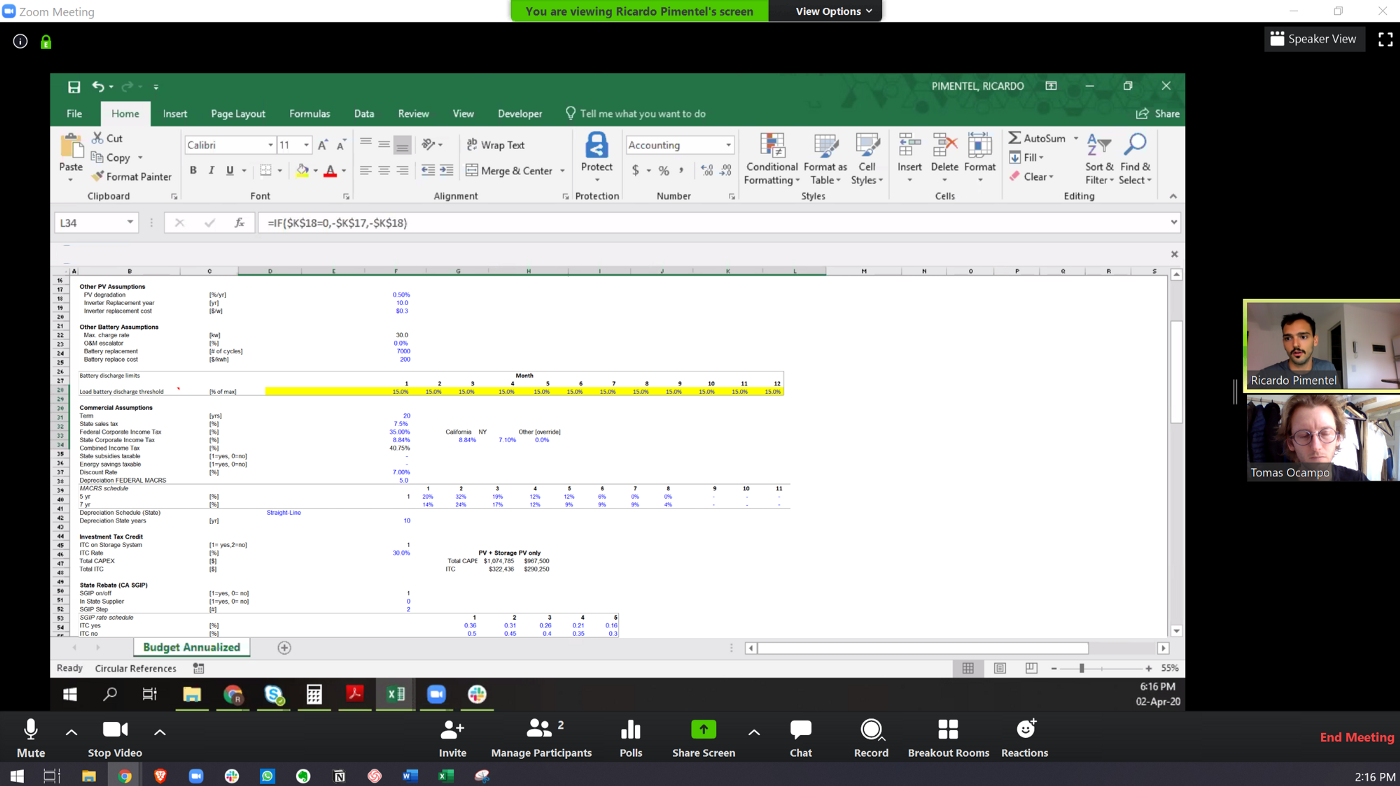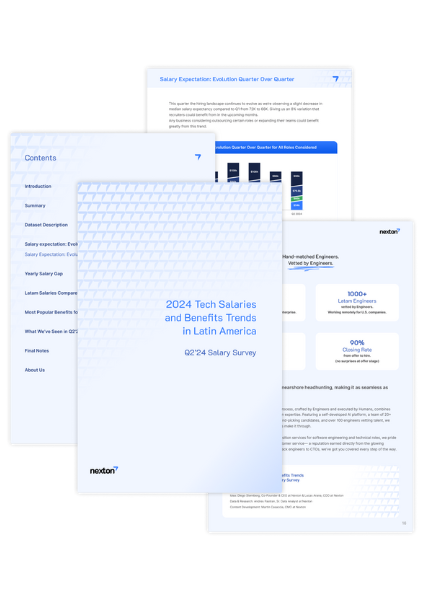Working remotely used to be seen with disdain at most companies. However, well implemented, distributed work can be even more effective as working in an office. There are million-dollar companies (ej. Gitlab, Zapier, Wordpress, Elastic) that are fully remote. In fact, anyone who hired a lawyer or an accountant has worked with a remote team.
Distributed teams present a unique opportunity: flexibility and access to a global talent network. Here some advice gathered from years of managing remote teams.
The fundamental principles of managing a remote team
🚫 Do not mimic the office
One of the common mistakes made when switching to remote work is to attempt to mimic life at the office (e.g. making the team keep their webcams on at all times to simulate being “present”).
Instead of recreating the office, a smart approach embraces remote work’s unique characteristics and leans into its advantages: fewer distractions, easier to focus, performance-based feedback (vs. chair time). There are also personal advantages, such as not commuting to the office every day, or managing your time more efficiently.
✍ Write, write, write
The key to remote is to document everything. Meeting notes, calendars, project goals; everything has to switch from verbal to written. So it is key to:
- write everything down. From meeting notes, pending tasks to instructions for a new project. Keep everything in shared documents.
- write as simple as possible. Write as if you were talking to a friend, not to a client, and avoid jargon.
- as you start a new task, create a draft and share it. This helps perfect your aim and prevents you from spending time on the wrong path.
It is also necessary to have one source of truth: a shared folder or an online document repository, where you can store the documentation for every project. So if someone from your team misses a meeting or wants to add comments they won't have to search in emails or ask someone else, they will know where the information is.
🔧 Use only a few tools
- Do not get too excited with the thousands of tools available for remote teams. You should be good with one tool for:
- communication management / internal team chat (Slack, or Discord)
- video Conference calls (Zoom)
- project management app. At YPF Ventures, we use Trello, but a shared excel would do the trick.
- cloud storage for your documents (Drive)
Have a work dedicated communication tool (e.g. use Slack, not SMS) to better separate work and personal time. We all tend to answer SMS messages as if they were all urgent. To have a work chat room will allow everyone to focus and organize their workflow. It also helps separate work from personal life.
📞 Asynchronous and group communication
Remote’s culmination is asynchronous communication, unlocking hours of focused work without distractions.
Why is this important? We, humans, are bad at multitasking and are more efficient in concentrating on one task. Here is a good article on the subject: Maker’s schedule, Manager’s schedule.
Some communication tips:
- use group channels as opposed to one-on-one chats. Individual chats generate silos and make the team lose context.
- do not expect others to answer messages immediately. Using the work chat allows team members to adjust notifications and answer on their own schedule. Obviously, if there is something urgent, one can always use regular text messages or make a quick phone call.
- minimize meetings. Schedule meetings only for urgent tasks or, conflict solving or creative work
- think carefully about which meetings could be replaced by documents. For example, a weekly update meeting can easily be replaced by a shared document.
Tips for meetings:
- minimize participants. Invite only indispensable participants. It is hard to have a virtual meeting with too many people.
- always have an open shared document on your screen (using google docs or Mural). That document will serve as a whiteboard where everyone can share ideas or comments and add the meeting notes.
- turn on your camera. It helps to see everyone’s faces during a meeting.
- however do not force anyone to turn their camera on. Some people may be exhausted from video, taking the meeting during a walk, or have their kids playing in the background, and they don’t want you to see.
- always have a meeting agenda (this also applies to non-remote in-person meetings). Designate a moderator that will make sure the agenda is followed.
- after the meeting, save the document in a shared folder. Again, the key to remote is to document everything.
Remote meetings - Always share a draft document where everyone can add ideas and comments.
🥇 Measure results, not “chair-time”
In remote work, there is no such thing as time tracking or “showing-up” pressure. Hence the only measurable (and relevant) metric are actual results. Again, documentation is key: every project and task must be shared. Proper documentation allows one to run work in parallel, understand who has a work overload, or even discover opportunities to help teammates. There are many different ways to manage projects and as many to document them. Excel can be good enough, but one can also use online platforms such as Trello or Asana.
🎉 Do not forget our shared humanity and that humans need interaction
Create moments for the team to interact and bond. To be social on camera is more challenging than in person. It's essential to be deliberate about organizing team building activities that unite the team beyond work.
Organize at least one informal team meeting per week: story time; have each team member share their favorite activities outside of work or videos, readings or events recommendations. play games. Even the most mundane game such as this Pictionary can be good fun.
Be intentional when organizing these activities. We all need emotional support.
Switching from the office to remote work
Working remotely requires specific skills, but it's not that hard. Leaders play a key role, but so does every team member. Working remotely can lead to misunderstandings. We must seek empathy. Default to compassion, rather than anger. Assume the best intentions. If you haven‘t yet, watch this: This is Water, de David Foster Wallace.
Team leaders must set the example and lead by empathy. If you manage a team, you can try to keep your camera on during the day, leaving an “open door” for anybody to come in and get feedback or advice.
🧘🏻♂️ Personal advice How to handle your own transition to remote work?
- have a routine. Be deliberate separating work and personal time (and if you can, space). Get dressed for work, do not stay in pajamas. Schedule time to work and time to relax.
- focus. If you can not get off social media, use the Pomodoro Method: work for 25 minutes straight, then take a 5 minutes break. Repeat, and every 4 hours, take a 30 minutes break.
- start. Another method to gain focus is simply to start. If you have a long and complicated task to complete but don’t even know where to begin, do not plan, jump right into it. As Master Yoda said; “Do or do not. There is no try”.
- write down an agenda for the day, or a list of everything you accomplished at the end of the day. Accountability leads to focus. It also gives you a sense of fulfillment those days when you feel like you didn't get much done, but you did.
- having kids being noisy at home is part of life. If you are in this situation, do not worry about it. Introduce them to the team. Everyone will love to meet them! But if this bothers you, you can use Krisp, which mutes background noise in communication apps.
Working and leading teams remotely requires practice. Let me know if you need help.
I hope this article helped clarify a bit how to manage remote teams. If you have any questions or best practices you would like to share, I would love to hear from you.
Notes: The author started and led 2 fully remote teams: (i) Deltaway Data, focused on data analytics for European waste-to-energy Companies, with engineers distributed between China, France, and San Francisco. And (ii) Puna Energy Resources, a energy market consultant Company, with a team distributed between San Francisco, Japan, and Argentina. Currently, he is a Director at YPF Ventures.
Appendix
📚 Other resources/links
Notion — Remote Work Wiki
Basecamp — Remote: Office not required (Kindle book)
Zapier — Guide to working remotely
Gitlab — Remote Playbook
Stanford GSB — Working from home? Here’s how to be more effective
👩💻 Some final cybersecurity points While working remotely, we usually have less protection. That’s why it is key to adopt good practices. Some important points:
- update. Keep your phones, laptops, wifi routers, and other devices up to date.
- use safe passwords. Use passwords that are at least 20 characters long and a mix between numbers, special characters (%$&^) and letters. Avoid using real words but use nonsensical chains of characters.
- do not repeat passwords between sites. A repeated password is as secure as the least safe of sites you use it at. Above all, do not repeat your email account’s password, since this one can be used to reset all your other passwords.
- use the 2 factor authentication. Wherever possible use 2 factor authentication and avoid authentication by SMS as somebody at your phone company can clone your SIM card. Use an app such as Google Authenticator instead.
- use a password manager. To fulfill the advice on password security, one should use a password manager. This acts as your volt, keeping all your passwords safely stored with a master password (which you should keep offline, and only you should know). Some alternatives: 1password; LastPass; Bitwarden;
- protect your wifi with a password. Otherwise, any neighbor with access to your network can easily see your traffic.

.png)


